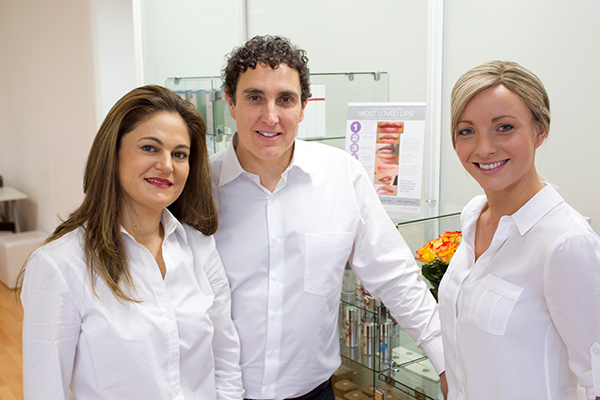Does the skin need to burn in order to see sun damage?
It is a common misconception that the skin needs to burn in order to see sun damage, however this is not true…
There are two types of UV rays which affect the skin:
- UVB rays are responsible for epidermal damage, resulting in sunburn. These rays are obtained from direct sun exposure and cannot penetrate through glass. When the skin peels after a sunburn, this is the body attempting to remove damaged skin cells before they become cancerous.
- UVA rays are the main contributor towards photo-ageing, penetrating deeper into the dermis, and cannot be filtered by glass. Therefore you are at risk of obtaining UVA rays when driving or even sitting inside near a window.
How does pigmentation develop?
Pigmentation develops as a response to UV-induced trauma, resulting in stimulation of melanin production. Melanin (pigment) is the skin’s barrier defence to further damage. Abnormal deposition of melanin in the epidermis results in freckles. Over time, accumulative sun damage causes these sun spots to become larger, commonly referred to as ‘age spots’ or solar lentiginies, as they are often seen in the later years.
Actinic keratoses also often develop in later years as a result of long-term sun exposure. They are precancerous lesions of the skin, with a crusty, pink appearance, and have the potential to become malignant.
What accelerates the appearance of ageing?
Sun exposure causes free radical production, which is where oxygen molecules become unstable and seek alternative molecules to scavenge an electron in order to become whole again. This results in damage to skin cells, altering their function and DNA, impairing the skin’s ability to repair itself and contributing to collagen depletion. Long-term sun damage also results in the accumulation of abnormal elastic fibres. This accelerates the appearance of ageing, resulting in lines and wrinkles, enlarged pores and poor skin elasticity.
Telangiectasia or superficial dilated capillaries can be the result of thinning and weakening blood vessel walls as a response to sun-induced trauma. This also contributes to facial flushing and redness.
How do pigmentation and facial redness treatments work?
Red and brown discoloration treatments work by precisely targeting unwanted pigmented lesions:
Brown discolorations, also known as pigmentation (age spots, sun spots, etc.), are darker than the rest of the skin and absorb more laser energy than the surrounding skin.
Red discolorations, also known as vascular lesions (small veins, rosacea, cherry angiomas, etc.), are overgrown or enlarged blood vessels. Preferentially heating vessel walls causes them to weaken, fall and be absorbed by the body.
What can I expect during pigmentation treatment?
We will apply a clear gel to the skin on which the chilled laser handpiece will glide. Treatment progresses in stages:
- Stage 1: Utilizing high precision beams, laser energy is delivered to distinct pigmentation, sun spots and age spots.
- Stage 2: The same high precision beam is adjusted to match distinct vascular targets including superficial veins and cherry angiomas.
- Stage 3: The laser is changed from a precision spot to a large spot for general background sun damage and pigmentation.
Is the pigmentation treatment painful?
You may experience a slight tingling during treatment. To help manage comfort and safety, the system is equipped with a chilled sapphire tip which cools the skin before, during, and after each pulse. Depending on the level of the treatment, we may offer a topical anesthetic to help numb the skin prior to treatment.
How long do pigmentation treatments take?
Treatments can take 5 to 30 minutes or more depending on size of the treatment area. If a topical anesthetic is necessary, you should allow 20 to 30 minutes or more for it to take effect. This is best discussed with our staff before treatment.
How many pigmentation treatments are needed?
Most patients experience considerable improvement after 1 to 4 treatments depending upon the skin condition and level of treatment.
How long will results last?
While treatments can help remove the signs of aging, sun damage and pigmentation they cannot stop the process. Exceptional results can be maintained with follow-up treatments and a daily sun block regimen.
Is it safe?
DermaCare is the leader in medical prescision laser technology with a track record of providing exceptionally safe and effective pigmentation treatments. All treatments have been carefully researched and FDA cleared.

